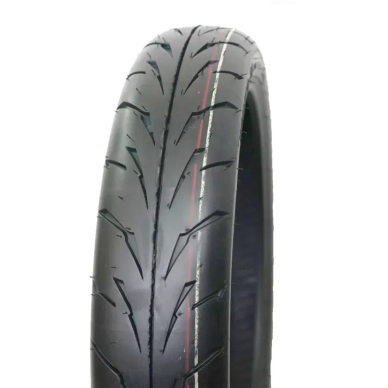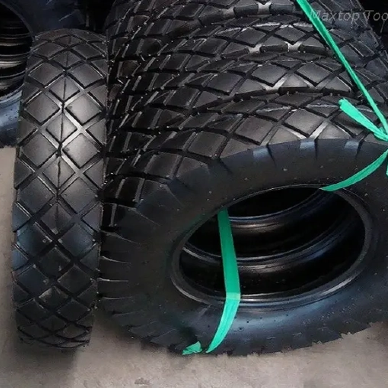
Flat tyres are one of the most common problems that drivers encounter on the road. At some point in your driving experience, you’ve probably asked yourself, “Can I still drive on a flat tyre?” or “How far can I go before it’s dangerous?” It’s a fair question—especially if you’re in an isolated area or in the middle of traffic. But the truth is, a flat tyre is more than just an inconvenience—it’s a serious safety risk.
According to the National Highway Traffic Safety Administration (NHTSA), there are over 33,000 tyre-related accidents each year in the United States alone. Many of these could be prevented with proper tyre care and a clear understanding of what to do in case of a flat.
Immediate Risks of Driving on a Flat Tyre
If you’ve just noticed your tyre is flat, your first instinct might be to “just make it to the nearest shop.” However, driving on a flat tyre—even for a short distance—can have serious consequences.
Loss of Control
A deflated tyre can significantly impact your vehicle’s handling. Steering becomes sluggish, and stopping distances increase dramatically. This makes it difficult to maneuver your car safely, especially in emergency situations or at high speeds.
Damage to Vehicle Components
When your tyre is flat, the weight of the vehicle presses directly onto the rim. The result? You could bend or crack the wheel, damage the brakes or suspension system, and destroy the tyre entirely. What could have been a simple patch job can quickly turn into hundreds (or thousands) of dollars in repairs.
Risk of a Blowout
Driving on a flat tyre can cause it to overheat due to the friction generated between the tyre and the road. This overheating can lead to a blowout—an explosive rupture of the tyre—which can cause you to lose control of the vehicle entirely.
Bottom Line: Don’t Drive Unless You Have To
The safest course of action is to pull over immediately, assess the damage, and change the tyre or call for roadside assistance. Driving on a flat tyre should only be a last resort in true emergency situations.
Emergency Driving on a Flat Tyre
Despite the serious risks associated with driving on a flat tyre, there are certain emergency situations where moving your vehicle becomes absolutely necessary. You might find yourself on a busy highway with fast-moving traffic, in a remote or dangerous area without cell reception, or in weather conditions where it’s unsafe to remain stationary. In these scenarios, your immediate safety may depend on getting your vehicle to a safer location, even if the tyre is flat. While this should never be the first course of action, sometimes it's the only viable one.
What’s the Safe Limit?
When it comes to emergency driving on a flat tyre, there are some clear limitations that experts and tyre manufacturers strongly advise drivers to follow:
These guidelines are not just suggestions—they're based on extensive testing and are designed to minimize the damage to your vehicle while allowing you to relocate to safety. The goal is not to continue driving for convenience but to make a short, deliberate trip to a nearby parking lot, the shoulder of a quieter road, or a service station if one is within close range.
Why These Limits Matter
Driving on a completely flat tyre is extremely damaging to your vehicle. When the tyre loses all air pressure, the rim begins pressing directly onto the rubber and even onto the road surface. Without the cushioning of air, there’s nothing to absorb the impact of bumps, potholes, or debris, which means the wheel itself can become damaged. Beyond the wheel, flat tyre driving can harm the suspension system, brake components, and steering alignment, all of which can lead to expensive repairs and dangerous handling issues.
Heat and friction are also major concerns. As you drive—even at low speeds—the friction between the road and the flat rubber causes heat buildup, which can cause the tyre material to deteriorate rapidly. The longer or faster you drive, the higher the risk that the tyre will completely shred or detach from the rim, possibly resulting in a loss of control.
How to Minimize the Risk
If you must drive on a flat tyre due to emergency circumstances, follow these precautions to reduce potential harm:
Drive slowly and steadily. Sudden turns or hard braking can cause the tyre to shift or separate from the rim entirely.
Avoid rough terrain. Stay on flat, paved roads as much as possible. Gravel, potholes, or uneven surfaces can severely increase damage.
Use your hazard lights. Activate your emergency flashers to signal to other drivers that you are experiencing a problem and moving slowly for safety reasons.
Stay calm and focused. Concentrate on steering straight and avoid overcompensating for any wobbling or pulling that may occur.
Even within the 1.5-mile and 20 mph limit, it's important to treat this as an absolute last resort. The moment you reach a safer area, stop the vehicle and assess your situation. If you have a spare tyre or access to roadside assistance, now is the time to use those resources.
In conclusion, while driving on a flat tyre should be avoided whenever possible, knowing how to safely handle emergency situations can make the difference between a manageable inconvenience and a costly or dangerous incident. Always prioritize your personal safety first, and once the situation is under control, seek professional help to repair or replace the damaged tyre.

Preventive Measures and Tyre Maintenance
The best way to avoid dealing with a flat tyre is to keep your tyres in good condition. Here’s how:
1. Check Tyre Pressure Regularly
Use a reliable gauge to check pressure at least once a month.
Inflate to the manufacturer’s recommended PSI (check inside the driver’s door or owner’s manual).
2. Rotate Tyres
Rotate every 5,000 to 8,000 miles.
Promotes even tread wear, extending tyre life.
3. Visual Inspections
Look for cuts, punctures, bulges, or uneven wear.
Catching issues early can prevent sudden flats.
4. Tread Depth Monitoring
Use the penny test or a tread gauge.
If tread is below 2/32 of an inch, it’s time to replace the tyre.
5. Wheel Alignment
Misalignment causes uneven wear and can lead to a flat.
Have alignment checked annually or after hitting a pothole/curb.
Regular tyre maintenance not only prevents flats but also improves your vehicle’s handling, fuel efficiency, and overall safety.
Conclusion
So, how long can you drive on a flat tyre? In short—keep it slow and brief. Standard tyres should only be driven up to 1.5 miles at under 20 mph in emergencies. Run-flat tyres may last 50–100 miles at 50 mph, while donut spares are safe for up to 70 miles. However, driving on a flat is never ideal due to safety risks and potential vehicle damage.
Prevention is key. Regular tyre maintenance helps you avoid unexpected flats. If you're looking for durable, high-quality tyre solutions—including wheelbarrow tyres, car inner tubes, and motorcycle tyres—consider reaching out to Qingdao Maxtop Tools Co., Ltd. With years of manufacturing expertise and a global client base, Maxtop offers reliable products built to last.
Visit Qingdao Maxtop Tools Co., Ltd. today to learn more or get in touch for custom tyre solutions tailored to your needs.
 注: 建议图片大小150px*50px
注: 建议图片大小150px*50px 






















